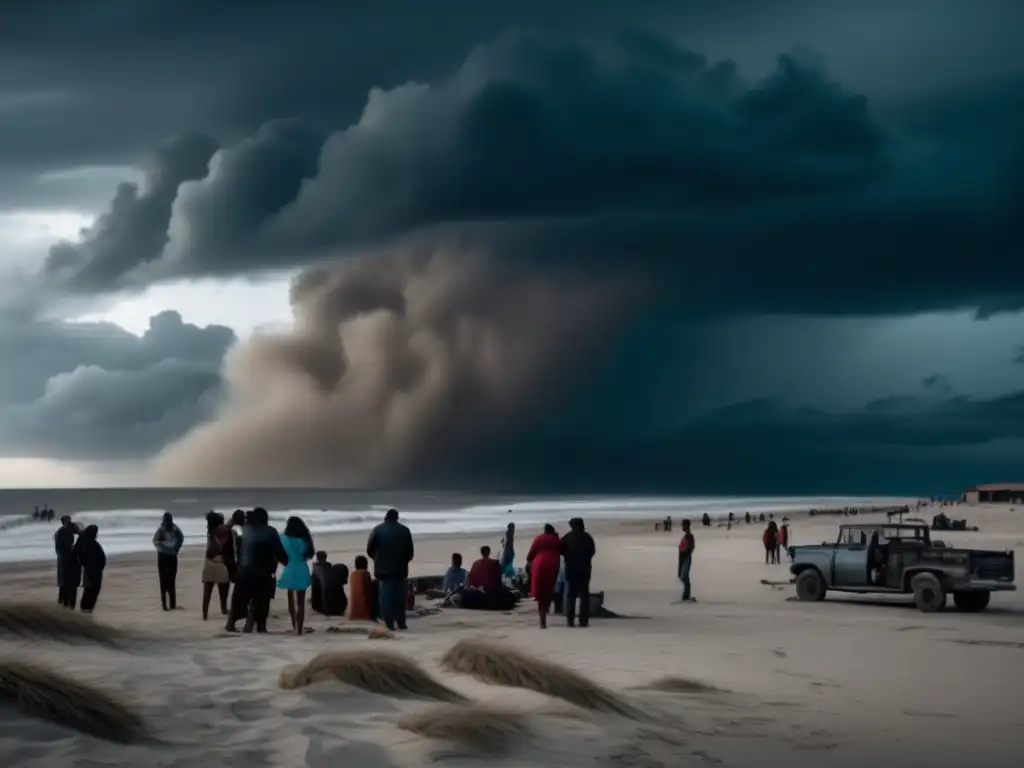Examining The Costliest Hurricanes In History

Examining the Costliest Hurricanes in History
Introduction
Every year, hurricanes wreak havoc on coastal communities around the world. The high winds, heavy rain, and storm surges can cause significant damage to homes, businesses, and infrastructure, resulting in billions of dollars in losses. While many hurricanes are devastating, some have been particularly costly, causing billions of dollars in damage and leaving lasting impacts on affected areas. In this article, we will examine the costliest hurricanes in history and the lessons we can learn from them.
The Top 5 Costliest Hurricanes

Hurricane Katrina (2005)
Hurricane Katrina is considered one of the deadliest and costliest hurricanes in U.S. history. The storm made landfall on August 29, 2005, as a Category 3 hurricane, causing widespread flooding and destruction along the Louisiana and Mississippi coastlines. More than 1,800 people were killed, and total damages were estimated at $161 billion. The storm revealed that poor infrastructure, inadequate planning, and ineffective response efforts could significantly increase the costs of natural disasters.
Hurricane Harvey (2017)
Hurricane Harvey made landfall in Texas on August 25, 2017, as a Category 4 hurricane, causing record-breaking rainfall and catastrophic flooding across the Houston metropolitan area. The storm caused at least 107 deaths and resulted in an estimated $125 billion in damages, making it the second-costliest hurricane in U.S. history. The storm highlighted the importance of preparing for extreme weather events, including improving infrastructure and emergency response efforts.
Hurricane Maria (2017)
Hurricane Maria struck Puerto Rico on September 20, 2017, as a Category 4 hurricane, causing widespread power outages and severe damage to homes and infrastructure. The storm resulted in an estimated $90 billion in damages and caused at least 2,975 deaths. The response efforts to the hurricane were heavily criticized, revealing the need for better disaster planning and support for affected communities.
Hurricane Sandy (2012)
Hurricane Sandy struck the East Coast of the U.S. on October 29, 2012, causing extensive damage to New Jersey and New York City. The storm resulted in at least 233 deaths and an estimated $70 billion in damages. The storm highlighted the need for better planning and preparation for coastal storms, including improving infrastructure and investing in flood control measures.
Hurricane Irma (2017)
Hurricane Irma made landfall in Florida on September 10, 2017, as a Category 4 hurricane, causing significant damage to homes, businesses, and infrastructure across the state. The storm resulted in at least 97 deaths and an estimated $50 billion in damages. The storm emphasized the importance of preparing for extreme weather events and investing in resilient infrastructure to reduce the impacts of future storms.
The Impact of Costly Hurricanes

Economic Impacts
Costly hurricanes can have significant economic impacts, particularly on local economies and industries. Hurricanes can result in business closures, property damage, and job losses, reducing economic activity and slowing the recovery process. The high costs of recovery and rebuilding can also strain government budgets and lead to higher taxes and reduced public services. Understanding the economic impacts of hurricanes is critical for developing effective response and recovery strategies.
In addition to economic impacts, costly hurricanes can also have significant social impacts. Displacement from homes, communities, and jobs can lead to increased stress and mental health issues, particularly for those already experiencing social and economic disadvantages. Natural disasters can also exacerbate existing inequalities, with low-income communities and minority groups often disproportionately affected.
Environmental Impacts
Costly hurricanes can also have significant environmental impacts, including damage to ecosystems and habitats, contamination of water supplies, and increased waste and debris. The long-term environmental impacts of hurricanes can be difficult to quantify but can have lasting effects on the natural environment and wildlife.
Lessons Learned from Costly Hurricanes

The Importance of Preparation
Costly hurricanes highlight the importance of preparation and planning for extreme weather events. This includes investing in resilient infrastructure, developing effective emergency response plans, and educating the public about hurricane risks and preparedness measures. Effective preparation can help reduce the impacts of hurricanes and facilitate the recovery process.
The Need for Resilient Infrastructure
Investing in resilient infrastructure is critical for reducing the impact of hurricanes. This includes improving flood control measures, strengthening buildings and homes to withstand high winds and storm surges, and investing in renewable energy sources. Resilient infrastructure can help mitigate the impacts of hurricanes and improve the long-term sustainability of coastal communities.
The Importance of Addressing Inequities
Costly hurricanes often reveal significant social and economic inequities in affected communities. Addressing these inequalities is critical for ensuring that all members of society are able to recover from natural disasters. This may include providing support for low-income and minority communities, improving access to healthcare and services, and addressing issues of housing affordability and homelessness.
Frequently Asked Questions

-
How do hurricanes form?
Hurricanes form over warm ocean waters when the temperature is at least 80 degrees Fahrenheit, and there are low wind shear and high humidity. The warm air rises, creating an area of low pressure, which can draw in cooler air from surrounding areas. As the warm, moist air rises and cools, it condenses into clouds and releases energy, strengthening the storm.
-
What is the Saffir-Simpson Hurricane Wind Scale?
The Saffir-Simpson Hurricane Wind Scale is a system used to classify hurricanes based on their sustained wind speeds. The scale ranges from Category 1 (74-95 mph winds) to Category 5 (winds greater than 157 mph), with higher categories indicating greater wind speeds and potential for damage.
-
How long do hurricanes typically last?
The lifespan of a hurricane can vary widely, depending on its location and environmental conditions. On average, hurricanes typically last between 9-14 days, with some lasting as long as several weeks.
-
What should I do to prepare for a hurricane?
To prepare for a hurricane, it is important to have an emergency kit with essential supplies, including non-perishable food, water, and medications. It is also important to develop a family emergency plan, including evacuation routes and a communication strategy. Keep up-to-date on local weather warnings and follow the advice of emergency officials.
-
What can I do to help those affected by hurricanes?
You can help those affected by hurricanes by donating to reputable relief organizations, volunteering your time and resources, and advocating for policy changes that support disaster resilience and recovery.
Conclusion
Costly hurricanes can have significant impacts on affected communities, including economic, social, and environmental consequences. However, by understanding the lessons learned from past hurricanes, we can work to improve preparation and planning efforts, invest in resilient infrastructure, and address social and economic inequalities. By working together, we can help ensure that our communities are better prepared to withstand the impacts of future hurricanes.
If you have any thoughts or questions on this topic, we encourage you to share them in the comments section below. Thank you for your time and attention, and please consider subscribing to hurricaneinsider.org for more informative content.
Additional Resources

- National Hurricane Center
- Ready.gov: Hurricanes
- Federal Emergency Management Agency: Hurricane Harvey
 Storm Chasers: Tracking Hurricanes For Science
Storm Chasers: Tracking Hurricanes For Science Tales From The Eye: Survivor Stories From Major Hurricanes
Tales From The Eye: Survivor Stories From Major Hurricanes The Link Between Hurricanes And Coral Reefs
The Link Between Hurricanes And Coral ReefsIf you want to discover more articles similar to Examining The Costliest Hurricanes In History, you can visit the Basic knowledge about hurricanes: category.
Leave a Reply

Articulos relacionados: